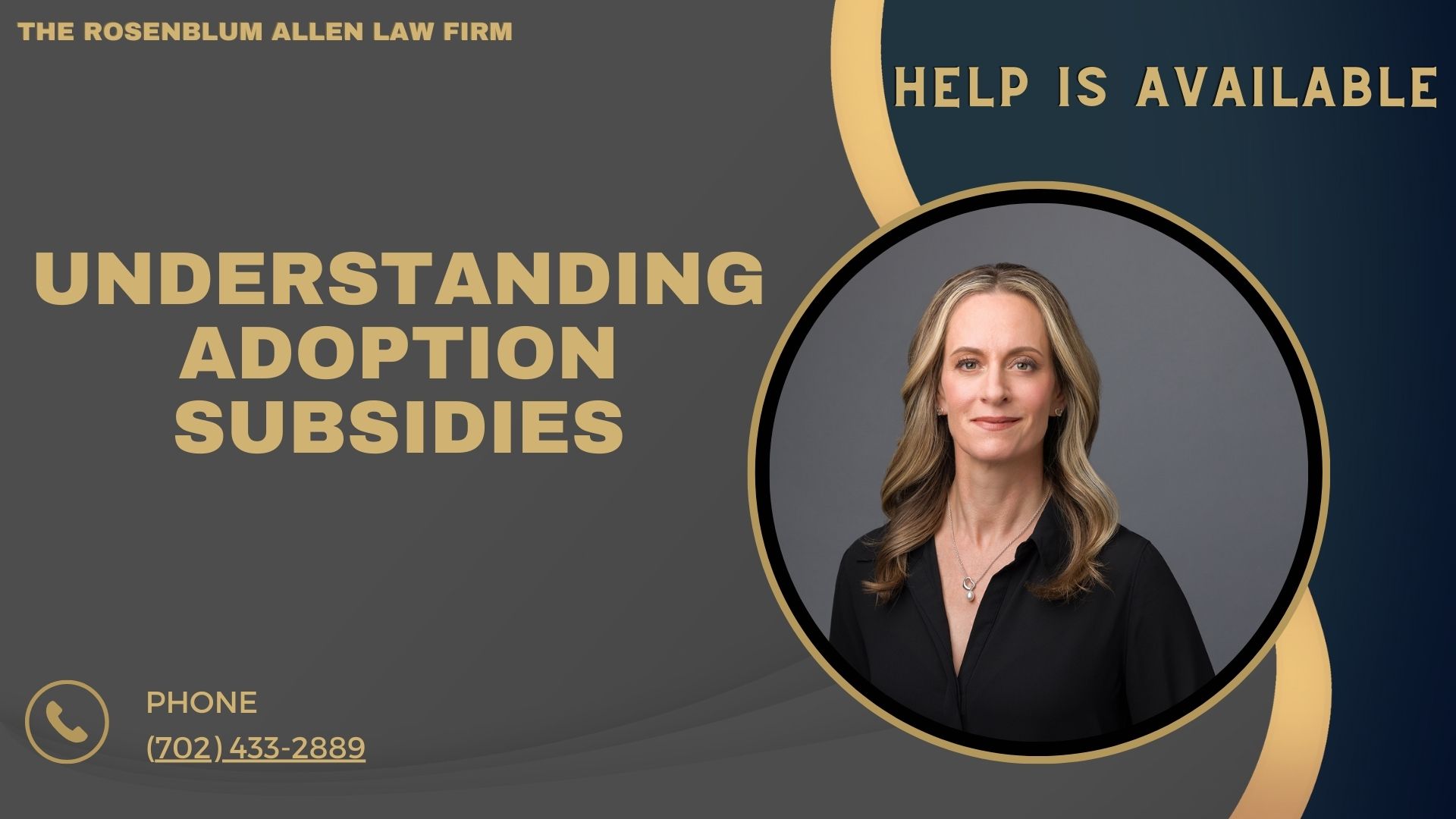Adoption can be a life-changing journey, not just for the child but also for the adoptive parents. But, paying for adoption is a big problem for many families. Adoption subsidies exist to ease this burden. They make it easier for those who wish to adopt to achieve the dream of family. In this guide, we’ll cover the types of adoption subsidies and who is eligible. These aids can help families provide a loving home for children in need.
Eligibility for Adoption Subsidies
Adoption subsidies help children find stable homes. The homes must be with families who can care for their needs. This help is especially for children who might otherwise remain in foster care. Eligibility for these subsidies varies a lot by state. But, some standard criteria typically apply:
Criteria for eligibility
Age of the child: Subsidies often focus on older children less likely to be adopted.
Special needs status: Children with physical, emotional, developmental, or mental health issues are frequently eligible.
Sibling groups: Efforts to keep siblings together qualify for additional support.
State-specific variations in eligibility
Each state has its own set of rules and criteria, which can affect subsidy eligibility. For example, some states might define “special needs” differently. They may offer subsidies to any child over a certain age or those who have been in foster care for a long time.

Types of Adoption Subsidies
Adoption subsidies help lower barriers. They help those interested in adopting children who need extra support. These subsidies are available through several sources, each with its focus and criteria.
Federal adoption assistance
Title IV-E assistance
Title IV-E of the Social Security Act provides the most federal funding. It is for adoption subsidies. Eligibility is based on the child’s situation. The adoptive family’s income is not considered.
Non-IV-E assistance
Non-IV-E state funds may be available for children not meeting the Title IV-E criteria. These funds offer similar benefits. But, the state is the sole source of their funding. They often have more flexible rules.
State adoption assistance
Each state offers adoption help programs. They aim to encourage adopting children who might otherwise stay in foster care.
Examples from various states
California: Provides an introductory rate plus additional support for children with special needs.
Texas: Offers monthly payments based on the child’s age and needs, along with Medicaid.
Tribal adoption assistance
Children of Native American heritage may be eligible for adoption subsidies. They can get them through tribal agencies. These agencies work with federal and state programs. They provide support that respects cultural heritage.
Adoption subsidies provide crucial support. They help adoptive parents manage the cost of bringing a new child into their family. We will explore the specific benefits these subsidies provide. We will also cover how to apply for them. This will ensure adoptive families are ready to welcome their new members.

Benefits Provided by Adoption Subsidies
Adoption subsidies aren’t just financial. They include a range of supports. The supports are designed to help children thrive in their new homes. Here’s a closer look at what these benefits typically include:
Monthly financial assistance
Determining the subsidy amount
Monthly adoption subsidies can vary a lot. They are based on the child’s needs and the state’s guidelines. Families usually negotiate this amount during the adoption process. It’s meant to cover the basic costs of caring for a child.
Medical assistance
Health care benefits through Medicaid
Most adopted children eligible for subsidies receive health care through Medicaid. This coverage is crucial. It ensures that the child’s medical needs are met. They include needs from any disabilities or conditions. The coverage does this without putting too much financial strain on the family.
Social and educational services
Access to therapy and unique education resources
Subsidies can also give access to key social and educational services, such as:
Therapy sessions might include speech, occupational, or mental health support.
Special education programs are tailored to the child’s unique learning needs.
These services are vital. They help adopted children overcome challenges and join their new families and communities.

Applying for Adoption Subsidies
Navigating the process for adoption subsidies can be daunting. But, understanding the steps involved can make it easier.
The application process
Documents and information required
To apply for adoption subsidies, parents need to gather many key documents:
The child’s medical and social history.
Proof of state residency.
Adoption agreement and placement documentation.
These documents help to establish the necessity and eligibility for subsidy support.
Negotiating the subsidy amount
Factors influencing the negotiation process
Negotiating the amount of the subsidy is a critical step and can depend on various factors:
The child’s specific needs and the associated costs.
The availability of funds in the state’s budget.
Recommendations by social workers and adoption professionals.
Understanding these factors can empower adoptive parents. They can then advocate effectively for the support they need.

Legal Aspects of Adoption Subsidies
Laws about adoption subsidies protect the rights of the adoptive parents. They also protect the welfare of the child.
Binding agreements
Understanding the legal commitment
When an adoption subsidy is agreed upon, it forms a legal agreement. It is between the adoptive parents and the state. This agreement outlines each party’s duties. It also ensures ongoing support for the child.
Post-adoption subsidy adjustments
Circumstances under which adjustments are made
Adjustments to the subsidy amount can be made under certain conditions, such as:
Changes in the child’s needs.
Changes in state law or funding.
Annual cost of living adjustments.
These adjustments ensure that the support remains appropriate and sufficient over time.
Adoptive parents can prepare better by understanding and using adoption subsidies. They help to provide a loving environment for their new family members. This section covers key info. It will help parents navigate the complexities of the subsidy system. They can secure the needed support for their adopted children.

Challenges and Considerations
Adopting a child is a journey filled with joy and challenges. Knowing the challenges you might face with adoption subsidies can help you navigate well.
Common challenges in obtaining subsidies
Delays and denials
Many adoptive parents encounter challenges such as:
Lengthy waiting periods for subsidy approval.
Occasional denials based on criteria misunderstandings or documentation issues.
Be ready for these possibilities. Have all needed documents and a clear understanding of the rules. This helps to speed up the process.
Impact on Adoptive Families
Financial and emotional considerations
Adoption subsidies provide big help. But, we must recognize their impact on a family:
Financial Stability: Subsidies help alleviate the financial burden, making it feasible for families to consider adoption.
Emotional Well-being: Knowing there is financial and medical support available can relieve some of the stress and anxiety associated with adopting a child with special needs.

Resources and Support
Adoption is not a journey to be taken alone. Numerous resources are available to assist adoptive families before, during, and after adoption.
National and local resources
Organizations and support groups
Some helpful resources include:
North American Council on Adoptable Children (NACAC): Offers guidance on adoption subsidies.
Adoptive Families Association: Provides a community support network and educational resources.
State-specific adoption agencies: Offer localized support and information.
These groups provide invaluable support and advice. They help families navigate adoption’s complexities.
Tips for navigating the system
Advice from experienced adoptive parents
Learning from those who’ve gone through the process can be highly beneficial:
Connect with local adoptive parent groups: Sharing experiences and advice can provide practical insights and emotional support.
Keep thorough records: Documenting every step of the adoption and subsidy application process can be crucial in addressing delays or disputes.

Breaking It All Down
Adoption subsidies are vital in making adoption a viable option for many families. They provide money and medical and educational support. This help integrates a child into their new family and community. Though there are challenges. Robust resources and community support are available. They can make the adoption journey smoother and more fulfilling.
Prospective adoptive parents can better prepare by understanding all parts of adoption subsidies. They cover who can get them, the legal commitments, and potential hurdles. It will help them for the rewarding journey of growing their family through adoption. This guide aims to give you the knowledge and resources. They will help you navigate the adoption process with confidence and support.

Frequently Asked Questions
Does filing for divorce first offer any legal advantages?
Yes, filing first has benefits. It lets you pick the court and set the pace.
What are the financial implications of initiating a divorce?
Filing first may cost money. But, it can give you a head start in preparing financially. This includes securing documents and assets.
Can the emotional impact of divorce differ based on who files first?
Yes, the first filer might feel more in control. This can ease their stress. But, it can catch the other party off guard.
How should I prepare if I'm considering filing for divorce?
Gather financial records. Consult a lawyer. Also, consider where you will live and your well-being.
Is there a strategic benefit to filing for divorce later?
In some cases, waiting to file might give you time to prepare better. You can prepare financially and emotionally. Or, you can attempt reconciliation.
What if my spouse and I jointly file for divorce?
Joint filing can lead to a more friendly process and faster resolution. It shows both spouses agree on the divorce.
How can I minimize conflict when filing for divorce?
Consider mediation or collaborative law. They are alternatives to a contentious court battle. They focus on open communication and compromise.

Additional Resources for You
In addition to guiding you through the complexities of filing for divorce, our lead attorney, Molly Rosenblum Allen, Esq., has developed a range of resources to assist you in various related legal matters. Whether you are navigating custody issues, understanding fathers’ rights, or engaging in child custody mediation, these resources provide valuable insights and legal guidance. Here are some of the comprehensive guides and services available:
- Las Vegas Custody Attorney: Effective legal representation for child custody cases in Las Vegas.
- Fathers Rights: Important information about the rights of fathers in custody and divorce proceedings.
- Supervised Visitation: Guidelines and legal advice on supervised visitation arrangements.
- Changing Custody Agreement: Advice on how to request and legally change custody agreements.
- Grandparents Rights Nevada: Understanding the rights of grandparents regarding visitation and custody in Nevada.
- Long Distance Co Parenting: Strategies for managing co-parenting across long distances.
- How a Mother Can Lose a Custody Battle: Key factors that could impact a mother’s custody rights.
- Custody Battle Tips for Nevadans: Practical tips for Nevadans going through custody disputes.
- What Not To Say In Child Custody Mediation: Advice on communication strategies during mediation.
- How Much is a Custody Lawyer: Information on costs associated with hiring a custody lawyer.
- Types of Custody in Las Vegas: An overview of different custody arrangements available in Las Vegas.
- Nevada Child Custody Laws: A detailed guide on the child custody laws in Nevada.
These resources are designed to help you better understand your rights and the legal procedures associated with family law in Nevada. If you need personalized assistance or more detailed information, please visit the links provided.

Outside Resources for You
American Bar Association (ABA): Offers comprehensive information on various legal topics including family law and resources for public education.
National Council of Juvenile and Family Court Judges: Provides extensive resources and training for professionals involved in juvenile and family cases.
National Association of Counsel for Children: Advocates for the rights of children and provides legal representation resources for child welfare cases.
American Academy of Matrimonial Lawyers: A resource for individuals seeking effective advice and lawyers specialized in divorce and family law.
Child Welfare Information Gateway: Offers resources on child welfare, child abuse and neglect, out-of-home care, adoption, and more..
Family Equality: Advocates for legal and lived equality for LGBTQ families, and provides educational resources related to family formation and issues facing LGBTQ parents.

A Special Message from Our Lead Attorney, Molly Rosenblum Allen, Esq

Thank you for taking the time to explore our resources. We hope you found the information helpful and enlightening. If you have any questions or need further help, please don’t hesitate to reach out. You can call me and my team at The Rosenblum Allen Law Firm at (702) 433-2889 to discuss how we can assist you.
We look forward to helping you with your legal needs. We will work towards a positive outcome together.







